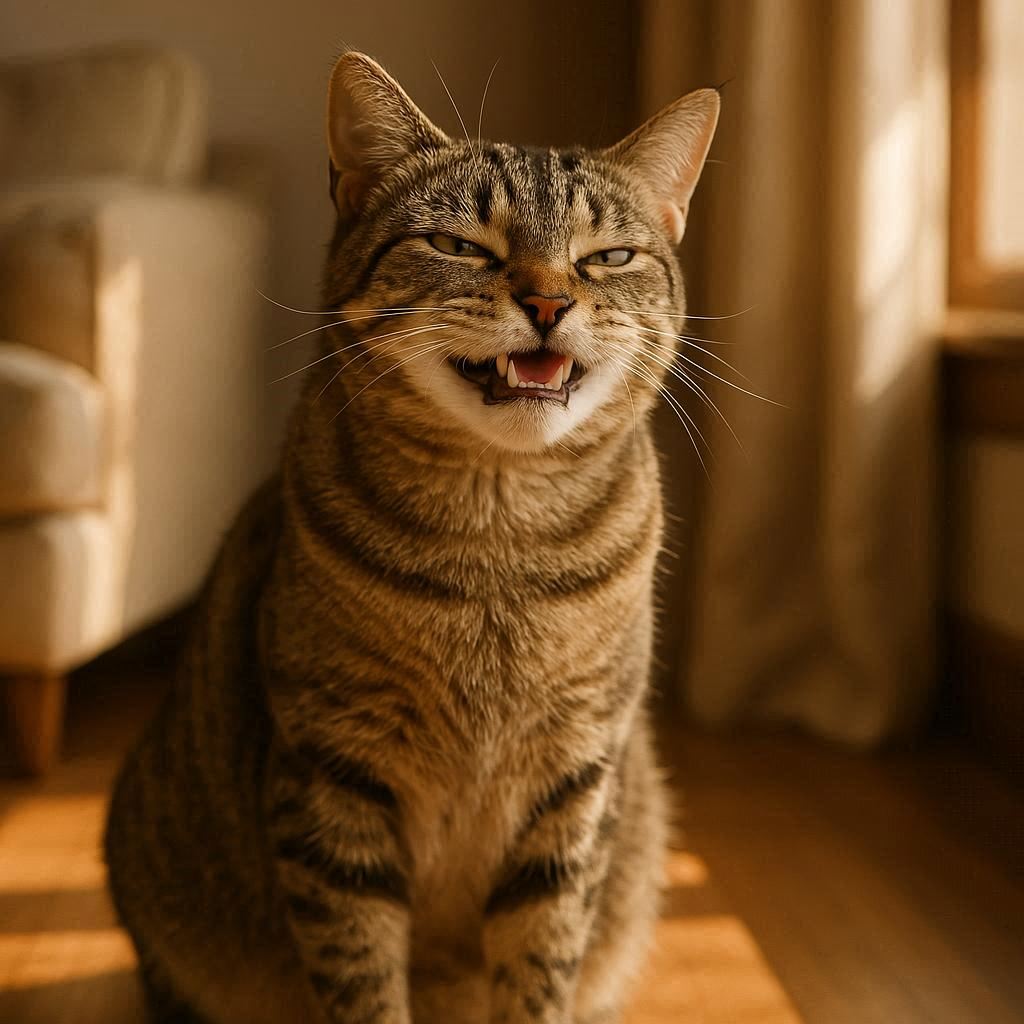Have you ever caught your cat pulling a strange scrunched-up face, almost like they’ve just smelled something awful? Chances are, you’ve just witnessed the Flehmen Response. But what exactly is this funny looking behaviour, and why do cats (and other animals) do it? In this article, we’ll take a closer look at what’s really going on behind that funny expression.
What is the Flehmen Response?
The Flehmen Response, also known as the flehmen grimace, flehmen position, flehmen reaction, flehming, or flehmenin, is a behaviour seen in many animals. It involves curling back the upper lip while inhaling (often with the nostrils closed), and holding this position for several seconds. While often associated with cats, this behaviour is found in many other mammals too, including horses, tigers, zebras, tapirs, elephants, and goats, to name just a few.
The Flehmen Response plays an important role in helping animals process scents that capture their interest, especially pheromones. Pheromones are chemical signals released into the environment that can trigger specific behavioural or physiological responses in members of the same species, often linked to territory, mating, recognition, and identification. Pheromones are special scents (chemical signals) that animals release into the air. Other animals of the same kind can smell them, and they contain information about territory, mating, and identification, such as ‘this is my territory, or ‘this is who I am.’

The Flehmen response in Cats
When a cat shows the Flehmen Response, you’ll often see them pause with their mouth slightly open. Most animals that do this, including cats, have a small opening on the roof of their mouth just behind the front teeth. This opening leads to a special duct that sends scents straight to the Jacobson’s organ.
The Jacobson’s organ, also called the vomeronasal organ, is an extra scent-sensing tool located in the roof of the mouth. Unlike the nose, it isn’t for ordinary smells. Instead, it picks up on chemical messages, such as pheromones, which tell the cat more about its surroundings and other animals. You might notice the Flehmen Response most often when your cat is sniffing another cat’s scent, investigating a new object, or even when you come home carrying unfamiliar smells. To us, it can look a bit funny or even silly, but for your cat it’s a powerful way of gathering information that their nose alone can’t give them.
While many animals have a Jacobson’s organ, not all of them show a Flehmen Response. Humans, for example, have tiny remnants of the organ, but it doesn’t work. A well-known animal with a Jacobson’s organ, apart from cats, is the snake. Snakes do not have a flehmen reponse, but instead they flick their forked tongues to pick up scent particles from the air or ground, then pass them to their Jacobson’s organ in the roof of the mouth. This allows them to “taste” the air, track prey, and learn more about their surroundings.
Conclusion
The Flehmen Response might look a little funny or even strange, but it’s an important and natural behaviour for cats and many other animals. It helps them gather information that their nose alone can’t detect, from pheromones to scents in their environment. So the next time your cat curls back its lips in that classic scrunched-up face, you’ll know they’re not just making a silly face.
If you would like more information about our cat sitting services, feel free to send us a message. Our team will be happy to help.

